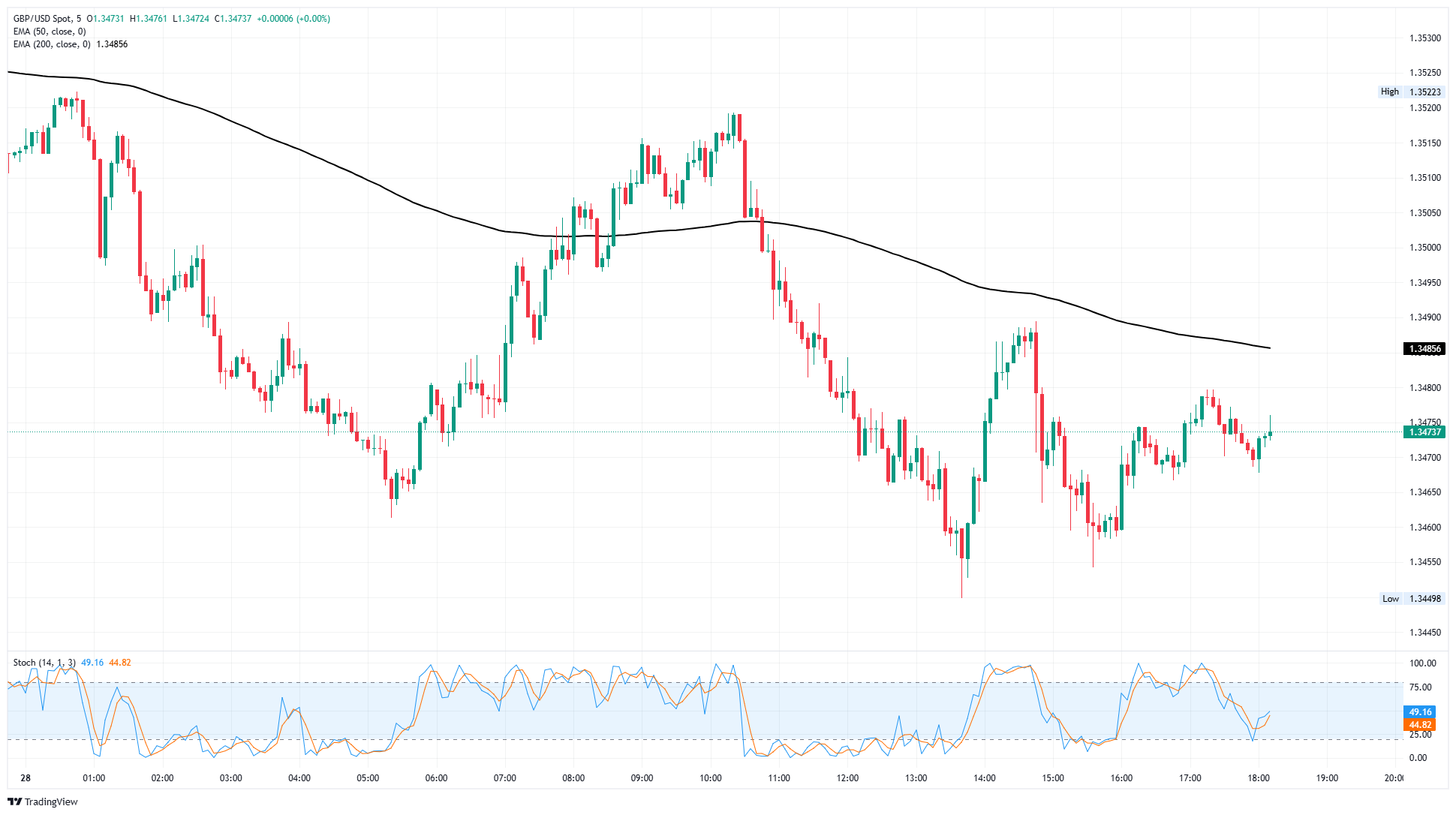GBP/USD looks upward after Fed Meeting Minutes show growing caution
- The Fed's cautionary tone in the face of structural upheaval continues to deepen.
- Fed officials continue to shy away from policy playbook as tariffs loom over the economy.
- FOMC staff forecasts for 2025-26 economic activity are broadly lower than March estimates.
The Federal Reserve's (Fed) latest Meeting Minutes from the Federal Open Market Committee's (FOMC) rate meeting on May 6-7 revealed that the Fed's wait-and-see approach has deep roots. Policymakers at the latest Fed meeting noted that the US Dollar's (USD) safe-haven status has taken a hit recently. They cautioned that a more "durable shift" in the Greenback's status could have lasting impacts on the US economy.
Nearly all FOMC members at the May rate meeting agreed that inflation risks could prove to be more "persistent than expected". With Fed staff directly citing tariff impacts as a key driver in the FOMC's weakening outlook on the US economy, the FOMC has laid decaying US economic conditions and the hazy outlook on inflation and growth at the feet of the Trump administration's whipsaw tariff policies.
More to come...
Market reaction
GBP/USD jumped slightly immediately following the release of the Fed's Meeting Minutes, with Cable jump into 1.3475 as investors collect into USD-negative positions early. However, GBP/USD is still trading firmly within Wednesday's range, with intraday price action catching a thin bounce after hitting an early low for the day near 1.3450.
GBP/USD 5-minute chart

Fed FAQs
Monetary policy in the US is shaped by the Federal Reserve (Fed). The Fed has two mandates: to achieve price stability and foster full employment. Its primary tool to achieve these goals is by adjusting interest rates. When prices are rising too quickly and inflation is above the Fed’s 2% target, it raises interest rates, increasing borrowing costs throughout the economy. This results in a stronger US Dollar (USD) as it makes the US a more attractive place for international investors to park their money. When inflation falls below 2% or the Unemployment Rate is too high, the Fed may lower interest rates to encourage borrowing, which weighs on the Greenback.
The Federal Reserve (Fed) holds eight policy meetings a year, where the Federal Open Market Committee (FOMC) assesses economic conditions and makes monetary policy decisions. The FOMC is attended by twelve Fed officials – the seven members of the Board of Governors, the president of the Federal Reserve Bank of New York, and four of the remaining eleven regional Reserve Bank presidents, who serve one-year terms on a rotating basis.
In extreme situations, the Federal Reserve may resort to a policy named Quantitative Easing (QE). QE is the process by which the Fed substantially increases the flow of credit in a stuck financial system. It is a non-standard policy measure used during crises or when inflation is extremely low. It was the Fed’s weapon of choice during the Great Financial Crisis in 2008. It involves the Fed printing more Dollars and using them to buy high grade bonds from financial institutions. QE usually weakens the US Dollar.
Quantitative tightening (QT) is the reverse process of QE, whereby the Federal Reserve stops buying bonds from financial institutions and does not reinvest the principal from the bonds it holds maturing, to purchase new bonds. It is usually positive for the value of the US Dollar.